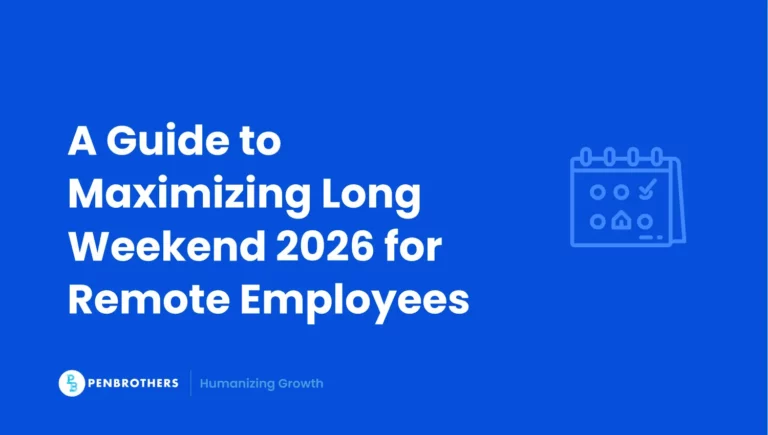Key Takeaways
- The DTR is the starting point of compliance and payroll accuracy in remote work.
- Employers must digitize and standardize DTR processes to prevent delays and disputes.
- Building a healthy timekeeping culture fosters accountability and trust.
With remote work now the norm, many employers and employees assume that the Daily Time Record (DTR) is a relic of the old office setup. Something you clocked in for with a punch card. But in truth, this tracker is still one of the most vital records in modern employment.
For remote teams, it’s more than a log of work hours. It’s the backbone of pay accuracy, compliance with Philippine labor laws, and trust between employer and employee. A well-managed DTR ensures that everyone is paid fairly and that companies can stand audit-ready, no matter how flexible their setup is.
In this guide, we’ll unpack what this means today, why it’s crucial for distributed teams, and how employers can modernize timekeeping without losing flexibility.
What Is a DTR (Daily Time Record)?
A Daily Time Record is an official record that captures an employee’s daily attendance. This covers the time they start work, take breaks, and log out. It verifies work hours, absences, and overtime, forming the foundation of payroll and compliance.
Under the Labor Code of the Philippines, employers are required to maintain accurate attendance records for all employees. These records serve as proof in case of wage disputes or audits and protect both sides when pay accuracy is questioned.
Common Types of DTRs:
- Manual: Traditional bundy clocks or log sheets
- Digital: HRIS platforms, biometric scanners, or online time trackers
- Hybrid: A mix of manual validation with digital entries
For remote workers, DTRs can take many forms. From automated tools like Clockify or Deel to integrated HRIS dashboards where employees can log time from anywhere.
The Legal Framework: What the Law Says About DTRs
Time records aren’t just a formality; they’re a legal requirement under Philippine labor law. The Department of Labor and Employment (DOLE) mandates that employers must:
- Keep accurate daily records of employee working hours
- Maintain these records for at least three years
- Ensure employees have access to their own attendance logs
These requirements fall under Articles 103 to 116 of the Labor Code, covering working hours, rest periods, and pay computation.
If an employee’s DTR is late, inaccurate, or missing, it can cause delayed salary releases, payroll disputes, and compliance risks during DOLE inspections. Employers are accountable for maintaining these records properly, regardless of whether the work setup is on-site, hybrid, or fully remote.
In short, a compliant DTR system isn’t optional. It’s a legal and operational necessity.
The Modern DTR Challenge in Remote Work
While remote work offers flexibility, it also complicates how time is recorded. The traditional 9-to-6 bundy clock no longer applies. Employers now face new challenges:
- Multiple time zones: Distributed teams logging in from different countries.
- Flexible schedules: Employees working non-linear hours.
- Manual submissions: Delays that result in late payroll runs.
- Inconsistent tools: Some teams using spreadsheets, others using trackers.
- Trust issues: Managers struggling between over-monitoring and under-tracking.
A common real-world problem? Late DTR submissions cause payroll bottlenecks. HR teams end up chasing employees for logs, which delays validation and salary processing. This directly affects morale and trust.
The solution isn’t stricter monitoring; it’s systemizing DTR processes that work for both compliance and flexibility.
How to Set Up an Effective Remote DTR System
An effective DTR system should empower, not micromanage. Here’s how to build one that works for remote teams:
1. Set Clear DTR Policies
Define when and how employees should log time, including cutoff periods, grace periods, and channels for submission. Communicate this policy during onboarding and through regular reminders.
2. Digitize Your Process
Use tools that automatically capture time entries or integrate with payroll systems. Options include HRIS software or even project management tools.
3. Automate Reminders and Validation
Set up automated notifications to remind employees of DTR cutoffs and flag missing or incomplete logs before payroll deadlines.
4. Provide Transparency
Allow employees to review their logged hours anytime. This builds trust and reduces disputes.
5. Balance Trust and Accountability
Encourage responsibility and not surveillance. Focus on results and time discipline, especially for output-based roles.
Pro Tip: Choose a system that fits your work culture. For example, creative teams may prefer flexible DTR inputs, while operations roles may need stricter cutoffs.
Common Timekeeping Mistakes That Lead to Payroll Delays
DTR errors are one of the top causes of delayed payroll in remote setups. Here are common pitfalls to watch for:
- Late submissions: Missing the cutoff by even a day can delay salary processing.
- Incomplete data: Missing log-ins or inconsistent hours.
- Timezone confusion: Misaligned hours between the employee and client.
- Manual spreadsheets: Prone to error and hard to validate.
- No standard format: Different templates across teams cause confusion.
Quick Fix: Adopt one centralized, automated DTR platform and require validation by both employee and manager before each payroll cutoff.
How Employers Can Foster a Healthy Timekeeping Culture
Compliance and culture go hand in hand. Employees are more likely to comply with DTR policies when they understand the why.
Here’s how to create a healthy timekeeping culture:
- Educate teams about how accurate DTRs ensure fair pay and benefits.
- Encourage ownership instead of relying solely on HR reminders.
- Avoid punitive measures for honest mistakes; provide grace periods.
- Reward consistency. Simple recognition can motivate compliance.
- Use DTR data to improve workload balance and not just to track attendance.
When employees see DTRs as tools for fairness, not surveillance, compliance becomes natural.
DTR Compliance Checklist for Employers
Here’s a ready-to-use checklist to ensure your remote DTR process is compliant and efficient:
- Written policy outlining submission cutoffs and responsibilities
- Designated HR personnel for validation
- Digital storage of DTRs (min. 3 years retention)
- Integrated DTR–Payroll system
- Regular internal audits
- Employee access to view or download their records
This checklist not only keeps your team legally compliant but also audit-ready anytime.
Compliance Meets Operational Ease
Managing DTRs across remote teams can be tedious, but it doesn’t have to be.
Penbrothers ensures that every client’s workforce operates compliantly, accurately, and efficiently.
- Our HR and payroll systems seamlessly track and validate DTRs aligned with Philippine labor law.
- We ensure timely salary releases by eliminating manual errors and late submissions.
- Dedicated HR specialists manage compliance so employers can focus on growth.
Here, remote operations run smoother by combining automation, accuracy, and human care in every time record.






